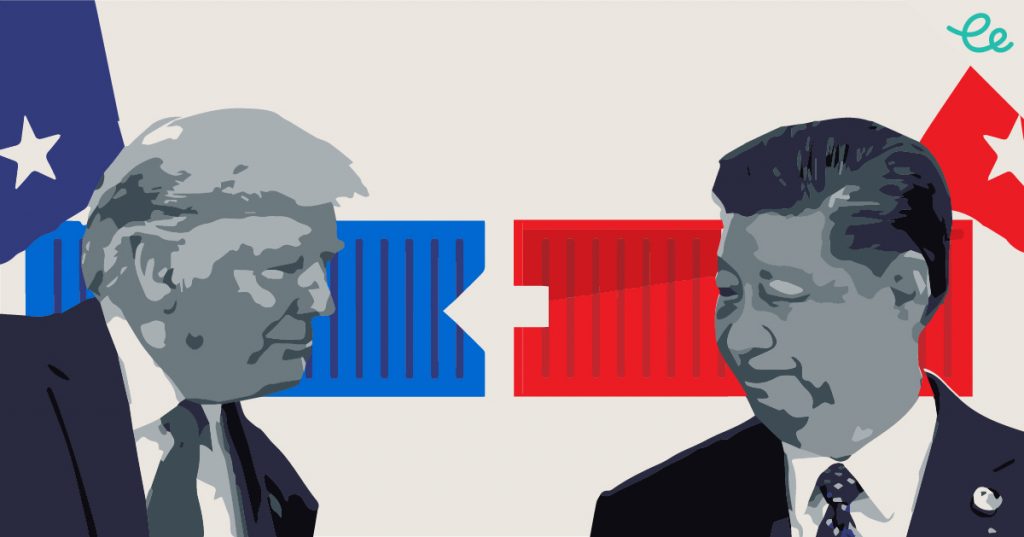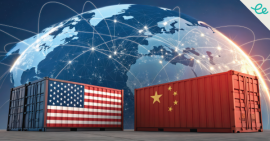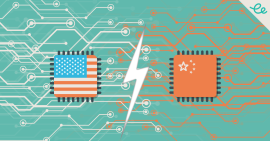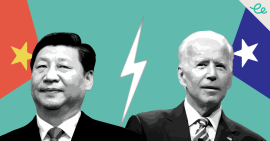Donald Trump’s negotiators visited Beijing again for trade war talks, with a Chinese delegation bound later for DC. But don’t expect a quick fix for China US relations. These negotiations could stretch for weeks or months, warned economic adviser Larry Kudlow. “This is not time-dependent. This is policy- and enforcement-dependent,” he said. This article is a summary of major US China news in March 2019.
Beijing has made proposals that go further than before, including on forced technology transfer, US officials told Reuters. Yet history haunts the discussions as China, very conscious of the “unequal treaties” imposed after the first Opium War, pushes back against US demands.
Trump threatened to keep high tariffs against Chinese goods until he’s certain Beijing is complying with any new trade agreement. US officials downplayed the likelihood of a quick deal, as the US trade representative and Treasury secretary readied for another Beijing trip next week. Trump pushed his team to get China to “double or triple” its offer to buy US goods.
The US-China trade war could cost the American economy US$1trn over the next decade. Senators are considering a partial ban on Chinese trains and buses, while several US colleges have closed their Beijing-backed Confucius Institutes.
US firms are helping build China’s Orwellian state, as tech partnerships empower new methods of control and surveillance. EU leaders weighed a more defensive strategy on China, ending the unfettered access Chinese business has enjoyed in Europe. The US increased pressure on Europe to avoid Huawei in building 5G telecoms.
As Huawei celebrated joining the likes of Apple in the ranks of multinational technology companies with revenue of $100bn, Steve Bannon and others revived a Cold War-era advocacy organisation to lobby the US public about the “existential and ideological threat” posed by China today.
US public opinion has soured on China, but decoupling from the US is “not realistic”, said Premier Li Keqiang, who also denied China would ask tech firms to spy. The NPC passed China’s new foreign investment law, which had been rushed through to address issues raised by Washington in the Sino-US trade war, such as unequal treatment on market access and government procurement, and forced technology transfer to Chinese partners.
A meeting between Presidents Trump and Xi to finalise an agreement appeared more likely in April at the earliest, as the US President claimed he was “in no rush” to strike a deal.
US national security adviser John Bolton offered Taipei strong backing after China despatched two fighter jets across the “median line” dividing the Taiwan Strait. Two US B-52 strategic bombers flew over the contested South China Sea week, ignoring Chinese objections to make the second such flight in 10 days.
The US trade deficit with China widened to an all-time record of $419.2bn, and Beijing’s purchases of agricultural commodities, energy products and manufactured goods as part of a trade deal may only make a short-term “dent” in the deficit.
Trump sounded optimistic that a landmark trade deal is close, with some whispering of a 27 March summit with Xi. But Chinese officials worried that the final terms may be less favourable. Beijing will make forced technology transfer illegal, a top official promised, while Huawei took on Washington. Citing the US Constitution, Huawei challenged a law signed by Trump in August 2018, and accused the US of hacking into its servers to steal source code.









Comments are closed.